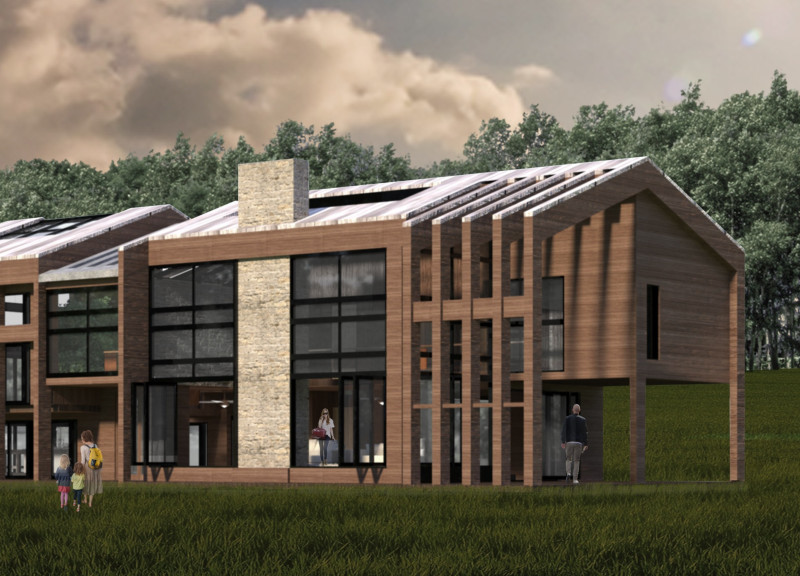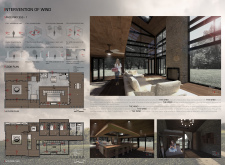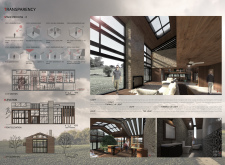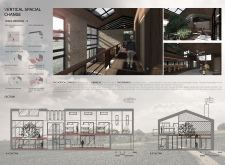5 key facts about this project
The TEAMAKERS GUEST HOUSE is located in Ozolini, a region known for its dense forests and strong tradition of tea-making. The design is focused on creating a space that is sustainable and encourages visitors to connect with nature. By highlighting the process of tea-making, the guest house embraces local culture while ensuring that light and wind play significant roles in the visitor experience.
Design Concept
The concept centers around tea-making as the main theme, integrating it into the overall layout. A central tea-making area takes precedence in the design, with surrounding spaces organized to support this traditional practice. This structure reflects the importance of tea in the local community, allowing guests to engage meaningfully with the culinary heritage of the area.
Spatial Organization
The guest house features open spaces enhanced by large windows and folding doors, which allow for ample natural light and fresh air. This design choice creates an inviting atmosphere for visitors, as they can easily connect with the outdoors. Outdoor decks provide functional areas for drying tea and opportunities for social interaction, encouraging guests to enjoy each other's company while surrounded by nature.
Architectural Aesthetics
A pagoda-shaped roof distinguishes the guest house, resonating with local architectural traditions. This design element offers a unique visual appeal that ties back to the cultural context of the region. It provides shelter while adding character to the building, embodying the blend of contemporary design and historical influence.
Verticality and Flow
Vertical spatial changes are purposefully integrated to establish a rhythm throughout the guest house. By incorporating varying floor heights, the layout allows for an engaging movement between spaces. The main living area flows into corridors that lead to guest rooms, facilitating exploration and enhancing the interaction between visitors and their environment.
In the tea-making space, the presence of apple trees highlights a commitment to sustainability. These trees not only serve as sources of fresh ingredients but also make use of discarded leaves for organic manure. This ecological approach reinforces the focus on environmental responsibility while celebrating local resources.






















































